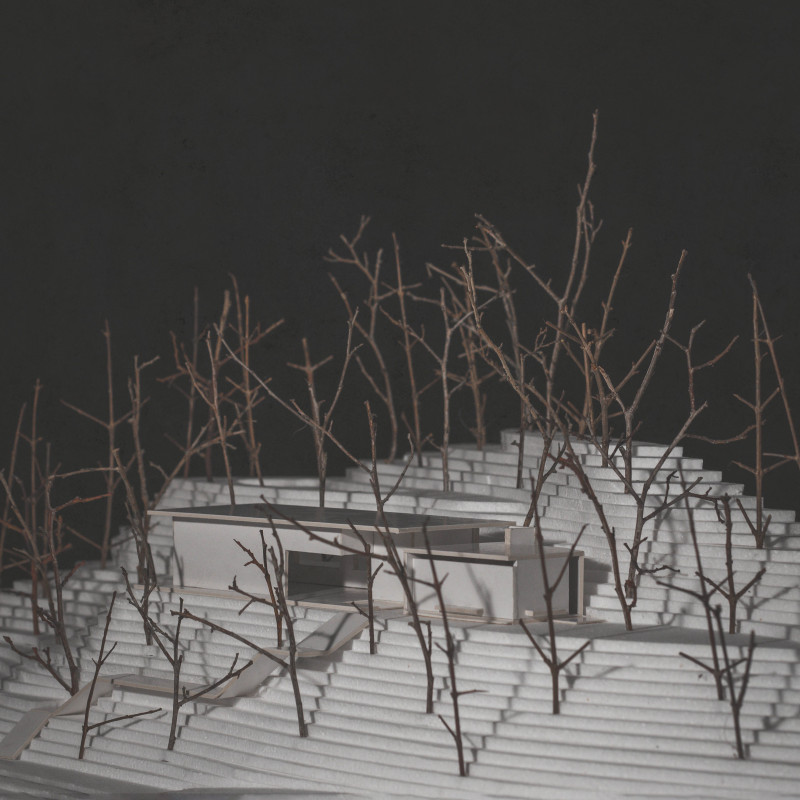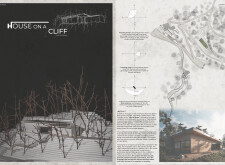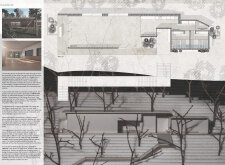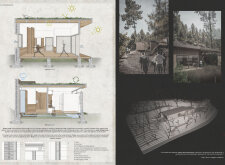5 key facts about this project
The primary function of the House on a Cliff is to serve as a peaceful retreat that facilitates yoga practices and personal reflection. The design incorporates essential amenities including a dedicated yoga room, changing areas, bathrooms, and a kitchenette, all arranged to enhance the user's experience of tranquility and focus on wellness. The interplay of these spaces is a deliberate attempt to offer both functionality and a meditative atmosphere, which is vital for the intended use.
The architectural design employs a terraced approach to minimize environmental impact, carefully maintaining the site’s natural contours. Structural choices are guided by sustainability principles, utilizing locally sourced materials such as wood, stone, straw, clay, and glass. Each material is selected not only for its functional properties but also for its contribution to the aesthetic integration with the environment. This conscious materiality reflects a commitment to the preservation of the ecological context while assuring comfort and usability.
The orientation of the building is another critical aspect, aimed at maximizing natural light and ventilation. This design choice enhances the ambiance within the yoga space and other functional areas. Outdoor spaces are also incorporated, providing zones for both solitary reflection and communal activities. This attention to outdoor integration supports the overall wellness concept by blending internal and external experiences.
A unique feature of this project is its use of green roofing systems that facilitate sustainable water management. This element not only contributes to the building's efficiency but also promotes biodiversity in the surrounding area. The combination of structural and environmental strategies exemplifies a comprehensive approach to architectural design.
For a more in-depth understanding, readers are encouraged to explore the architectural plans and sections of the House on a Cliff. These documents provide valuable insights into the design intentions, spatial relations, and innovative approaches that define this project. Additionally, examining the architectural designs and ideas will enhance appreciation for the thoughtful integration of architecture with its natural setting.


























